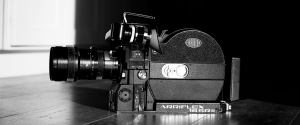Volcanologists Katia and Maurice Krafft were not only avid with their knowledge of volcanoes, but with their use of 16mm film cameras. The archive footage they shot, featured in Fire of Love, were solely filmed using a 16mm film camera, a common find amongst documentaries filmmakers or film productions needing a lightweight camera to ‘run-and-gun’.
16mm film has been a staple of documentary filmmaking for decades, and its use has continued to evolve alongside technological advancements in the film industry. While digital technology has become increasingly popular and accessible, there are still many reasons why 16mm film remains a viable and valuable choice for documentary filmmakers.
One of the main advantages of 16mm film is its aesthetic quality. The film format has a unique texture and visual warmth that cannot be replicated by digital cameras. This gives documentaries shot on 16mm a distinct and timeless feel that can be difficult to achieve with digital formats.
In addition to its aesthetic qualities, 16mm film can also offer a sense of authenticity and honesty to documentary subjects. Because film is a physical medium, it captures an image in a way that feels more tangible and real than digital footage. This can help build trust between the filmmaker and the subjects, and create a more intimate and emotionally resonant experience for the viewer.
Another benefit of 16mm film is its versatility. It can be used in a wide range of lighting conditions and environments, making it an ideal choice for documentary filmmakers who may need to shoot in unpredictable or challenging situations. And because 16mm film can be processed and edited in a variety of ways, it offers filmmakers a great deal of flexibility in post-production.
Of course, there are also some challenges to using 16mm film in documentary filmmaking. It can be more expensive and time-consuming than shooting with digital cameras, and requires a certain level of technical expertise. And because film is a physical medium, there is always a risk of damage or loss during shooting or processing.
Despite these challenges, many documentary filmmakers continue to choose 16mm film for its unique qualities and artistic potential. And with new technologies like high-resolution scanning and digital post-production workflows, it is now easier than ever to incorporate film into documentary projects.
Overall, the use of 16mm film in documentaries remains a valuable and relevant choice for filmmakers who seek to create a unique and authentic visual experience for their audiences. While digital technology has certainly transformed the film industry in many ways, the tactile and emotional qualities of 16mm film continue to make it a powerful and meaningful medium for storytelling.

Black and White Photograph of a 16mm camera